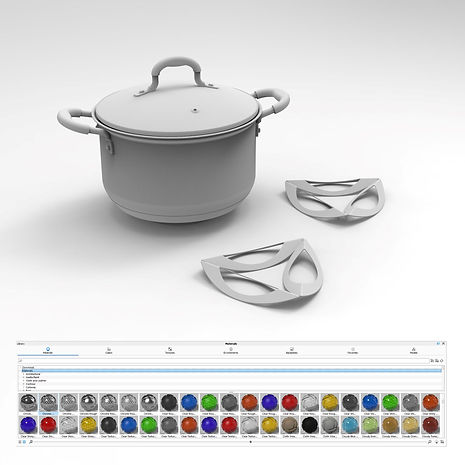Services
It is easy to look up the definition of Industrial Design, but it is so much more than that. Industrial design being an eclectic discipline, requires plenty of diverse tools and knowledge, as well as the ability to cooperate with experts from a variety of fields. At tsuki, we are lucky enough to work with an array of experts that make us proud to stand behind our work. We will present to you what the product preparation consists of
and what are the steps happening behind the scenes in our studio.

RESEARCH
Research is an essential part of development and is present in all phases of creating a product.
The first step is market research, followed by research of usability, ergonomics, technology, materials, manufacturing techniques etc.
After the first step is completed, we create a report which represents the results in a structured way. The amount of detail in the report depends on its purpose and reader’s experience. We make sure to present all the significant information making it understandable to all those involved in the process.
CONCEPT DEVELOPMENT
Concept development is most often connected to creating ideas through sketching. Development is making appropriate improvements in all stages by seeking out information and using them to solve problems in constructive and creative ways.
One of our favorite ways of doing so is through different forms
of mock-ups, allowing hands-on experience to shine through
and deliver a quick proof of concept.
For us, development is a mindset, meaning the process can keep on going well after a product is on the market, by taking into consideration the feedback and planning out improvements
for the next series in production.


USER TESTING
User testing is an important step that decreases the number of back and forths and helps create a successful product. The upfront cost can seem intimidating at times, but we find the investment more than worthwhile. It ensures the quality of the product and a job well done.
User testing has two main goals - to detect issues of the existing design, as well as to provide further insight in the needs, behaviors and abilities of the end users.
Testing starts off theoretically, with thinking up test plans and performing walkthroughs and mock-ups. While the theoretical part is certainly useful, it is incomplete without the user engagement. User examination without preconceptions and prejudices is vital to us.
ERGONOMICS
Ergonomics is the applied science that deals with designing and arranging things in a way that allows people to use them easily and safely.
In order for us to make a product ergonomic there is a set of rules to be followed, whether it is regarding handheld items, seating posture, accessibility or something else. However, these standards alone are not sufficient.
We apply ergonomic principles to an individual product through research, testing and development, while we take into account its unique purpose and circumstance.

CAD MODELING
Cad Modeling is 3D digital modeling, based on a parametric system that allows all the information about models to be accessible and editable.
This very technical type of modeling allows us to develop intricate and well defined freeform shapes as well as to perform preliminary analysis on models. While we are not an engineering studio and make no such pretenses, we find that it helps engineers in their job if basic technical needs are taken into account during the design process.

PROTOTYPING
Prototyping can be done in a number of different ways, starting from quick and rough mock-ups all the way to functional prototypes that have all the physical, technical and functional characteristics of the final product.
In our experience, we find it best to do a real size mock up as soon as the basic dimensions are set. Without this, it can be difficult to fully comprehend a product's true essence. We do this alongside the standard paper drawings and digital models.
As the project progresses, so does the precision and thoroughness of the prototype, while gradually introducing more advanced technologies such as laser cutting, 3D printing and electronics, some of which can be done in-house, while others are commissioned to outside experts.


IMAGE RENDERING
Image rendering is the process in which a computer program generates a complete image from a given model. After a 3D model has been imported into the rendering software, we add materials, colors, lighting etc. and adjust it to be as realistic
as needed.
We prefer that the realism of the rendered images/video increases with time, as the project progresses. Lower fidelity renders, at least at first, allow us to spend more time on development. It gives us the opportunity to evolve the product instead of giving a false impression of a defined design.
Later, of course, we invest a lot of time and effort to make the renderings as engaging as possible, through different angles, contrasts, textures and environments.
